Complete decongestive therapy (CDT), sometimes referred to as complex decongestive therapy, or combined physical therapy is the internationally recognized “gold standard” treatment system for the vast majority of patients affected by lymphedema.
Backed by long standing experience, CDT has shown to be safe and effective as the standard therapy for lymphedema. It is listed on the web sites of the American Cancer Society (ACS), the National Cancer Institute (NCI), the International Society of Lymphology (ISL) and the National Lymphedema Network (NLN) as the main component in the treatment and management of primary and secondary lymphedema.
Applied correctly by a skilled lymphedema therapist, CDT shows excellent long-term results in both primary and secondary lymphedema. Numerous published studies describe the effectiveness of this non-invasive, safe and reliable treatment approach, which has been well established in European countries since the 1970s. Although CDT has been practiced in the United States in one form or another since the 1980s, it only became accepted in the 1990s after definite guidelines were established, and all components of CDT were included in the teaching syllabi of schools providing training in lymphedema management in the United States.
The swelling in lymphedema is caused by an abnormal accumulation of protein and water molecules in the tissue and results from the inability of the lymphatic system to perform one of its basic functions, the removal of water and protein from the tissues of a certain portion of the body. This insufficiency can be caused by developmental abnormalities of the lymphatic system (primary lymphedema), or damage to the lymphatic system such as the removal or radiation of lymph nodes in cancer surgery, or infection of the lymphatic system (secondary lymphedema).
In order to reduce the swelling it is necessary to re-route the lymph flow – to include excess protein and water molecules – around the blocked area(s) into more centrally located healthy lymph vessels. This goal is achieved by a combination of different treatment modalities, all of which are integral components of CDT, and include
Manual Lymph Drainage (MLD),
Compression therapy,
Decongestive and breathing exercises and
Skin and nail care
Click here to watch a video explaining Complete Decongestive Therapy and its phases
CDT is performed in two phases. In phase one, also known as the intensive or 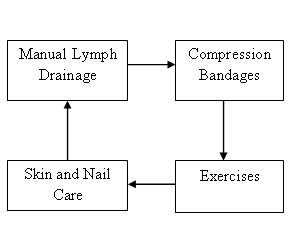 decongestive phase, treatments are administered by trained lymphedema therapists on a daily basis until the affected body part is decongested. Lymphedema most often affects the extremities, but can also be present in the head and neck, trunk, or external genitalia.
decongestive phase, treatments are administered by trained lymphedema therapists on a daily basis until the affected body part is decongested. Lymphedema most often affects the extremities, but can also be present in the head and neck, trunk, or external genitalia.
The duration of the intensive phase varies with the severity of the condition and averages two-three weeks for individuals with lymphedema affecting the arm, and two-four weeks for lymphedema affecting the leg. In extreme cases the decongestive phase may last up to six to eight weeks and may have to be repeated several times.
The end of the first phase of CDT is determined by the results of 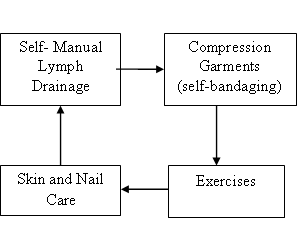 measurements on the affected body part, which are taken by the therapist. Once measurements approach a plateau, the end of phase one is reached and the patient progresses seamlessly into phase two of CDT, also known as the self-management phase. Phase two is an ongoing and individualized part of CDT, in which the patient assumes responsibility for maintaining and improving the treatment results achieved in phase one.
measurements on the affected body part, which are taken by the therapist. Once measurements approach a plateau, the end of phase one is reached and the patient progresses seamlessly into phase two of CDT, also known as the self-management phase. Phase two is an ongoing and individualized part of CDT, in which the patient assumes responsibility for maintaining and improving the treatment results achieved in phase one.
During the intensive phase, the patients are instructed in the individual components of self-management, which include a skin care regimen, home exercises, self-manual lymph drainage and the application of compression garments for daytime use. In some cases it may be necessary for the patient to apply padded compression bandages for nighttime use.
Regular check ups with the physician and the lymphedema therapist during phase two are necessary.
Dear Lymphedema Blog Reader – if you like the contents on this website, please help to keep it going. A great amount of work and research is necessary to provide you with up-to-date information on this site. Your donation supports these efforts and associated administrative costs. Surplus funds will be donated to Lymphedema/Lipedema-related charitable endeavors. Please donate using the “Donate Now” button on the right upper hand of this page – Thank You!
Join Lymphedema Guru, a Facebook page solely dedicated to inform about all things related to lymphedema – news, support groups, treatment centers, and much more

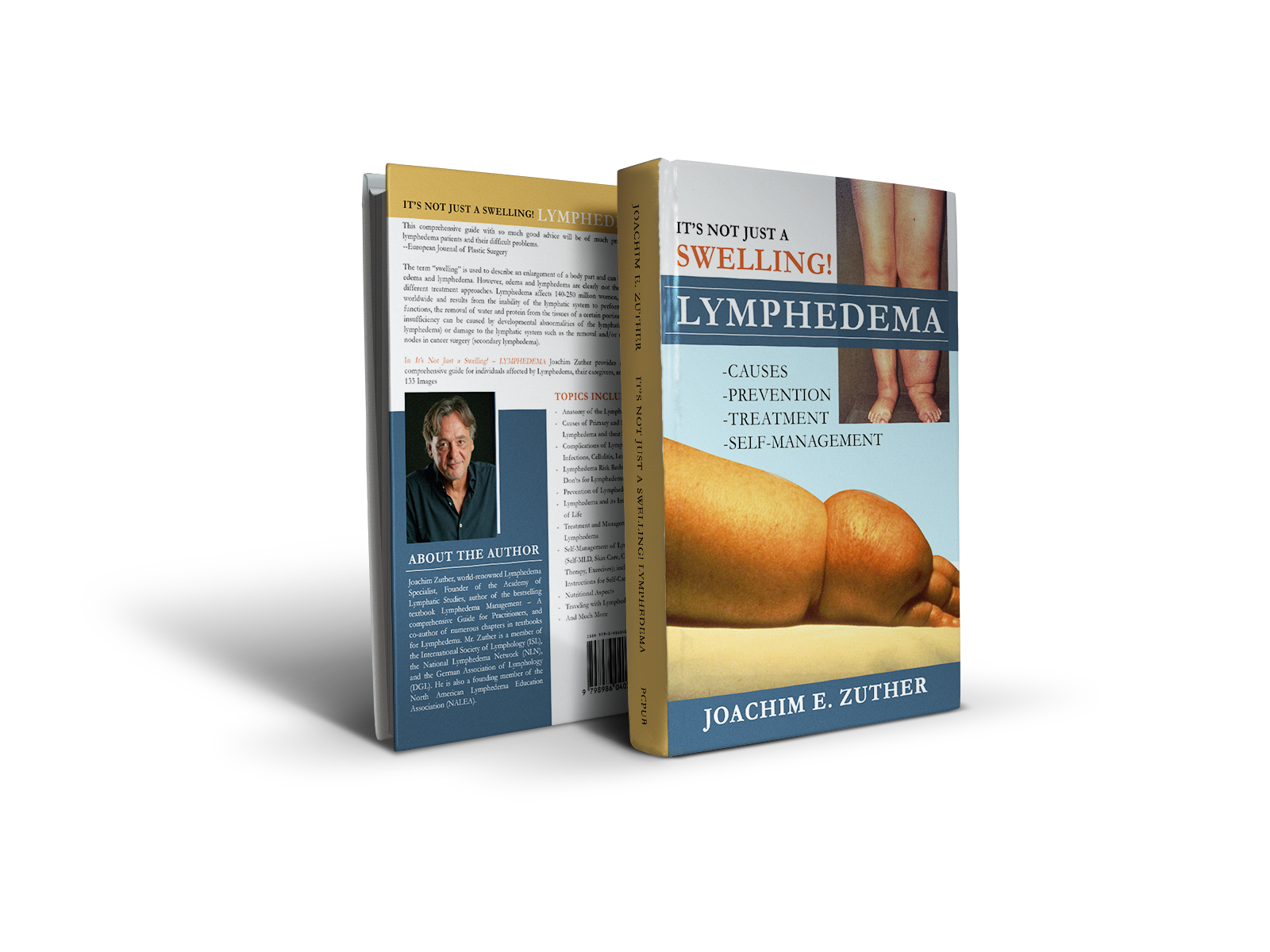
 Joachim Zuther, Lymphedema Specialist.
Joachim Zuther, Lymphedema Specialist. 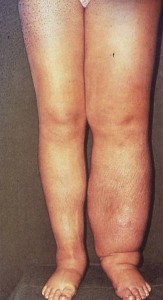
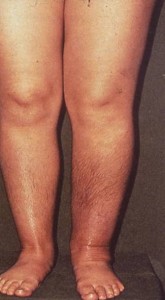


The CDT works. I’ve been wearing compression hose, wrapping my legs every night, take extra care of my skin and nails. However, I don’t exercise as much as I should. Walking is all I can do right now. I’ve been on this regiment for 4 years. As I mature, I’m way over the Senior Citizen level, I find that putting on the compression hose does take extra effort. Hands are not what they use to be.
You can wear rubber gloves, like the ones you’d wear while washing dishes. With the gloves on, once you have them over your heel, use your flat hands to work them up. You might also check with an Occupational Therapist in your area, as there are some sock-aides specifically made to assist you with getting these on. Hope these ideas help.
This is a great aid for putting on compression hose.
(Used with hyflex gloves).
http://www.ezyasabc.com/
YOU MIGHT TRY LOOKING AT A GARMENT CALLED THE FARROW WRAP. I HAVE MANY PATIENTS THAT CAN’T DON STOCKINGS BUT ARE ABLE TO KEEP THE EDEMA DOWN BY WEARING THE FARROW WRAP THAT VELCROS ON.
Here is a link to a site listing physicians specialized in lymphedema: http://www.lymphedemapeople.com/phpBB3/viewtopic.php?f=25&t=5
You may also contact the National Lymphedema Network (NLN)
Thanks as usual Joe. I have posted this note in my various online support groups.
My Orthotist told me to put a nylon knee high on before my support hose. I find this helps very very much.
I started a new lymphedema patient the other day and bandaged lower leg to the knee first treatment. When he came back the next day he had petechial bleeding above the bandage. Where the bandage had been the skin looked perfect and edema was markedly reduced. I intend to bandage to thigh next time. This is the first time I have seen this happen and I have been a certified lymphedema therapist 3 years. What is the reason for the petechiae?
Micro hemorrhages can have a number of reasons. I would suggest to double-check with the referring physician
A patient of mine with lymphoedema of the legs fell and broke her right femur. I was midway through her intensive CDT treatments when this happened. She is currently in hospital with pins and plate and immobile. What is the best approach to take to avoid oedema rebound please – this patient’s legs fill up very quickly with fluid? my bandages were taken off for her surgery. I am only bandaging the other leg at the moment and draining the fractured legs a little in the inguinals. Would appreciate your views please especially as regards bandaging during immobility. Thank you
Dear Marie: I would advise against the application of bandages while the patient is supine and resting. However, a TED hose would be beneficial (if possible) to avoid secondary complications and an increase in lymphedema volume. I would also advise to continue manipulating the inguinal lymph nodes.
Many thanks indeed.
Thanks. But I would like to point out my experience with CDT. I have congenital lymphedema on right lower limb and it become visible for past 10 years after an infection. I have undergone several sessions of lymphatic massaging and no use at all. Skin becomes softer, but not visible changes in size. I tried my luck with different lymph therapists. Lymphoscintigraphy shows that I hardly have any lymph nodes in my right lower limb. Could you please provide any suggestions? Have you come across such cases? Thank you very much
I hope the MLD sessions were followed up with compression bandaging. If so, then results may take longer if there is a lot of fibrotic tissue present in the lymphedematous limb. However, there should be some results if treated correctly.
Why does the Mayo Clinic NOT recommend CDT for people with hypertension or diabetes? I have been through successful lymphedema treatment and am continuing compression and using a combination of MLD and a Flexitouch machine. However, I am diabetic, and my blood pressure has continued to accelerate even with the addition and increase of medications (now on 8 different ones). Tonight’s reading is 193/109. Could there be any connection with CDT and hypertension?
I have learned much from this blog and your facebook page- and the pages you refer to, thank you so much. Please excuse my rant. I’m 3 weeks into phase 1 for leg lymphedema secondary to cancer. I’m a bit confused and disappointed to have personal experienced- after specifically choosing a lymphedema clinic so I could receive this gold standard of care- that I only see the actual physical therapist certified in lymphedema therapy once a week. The other two days (i have appts 3x per week) I’m ‘treated’ by the PT’s medical assistant, who has had no formal training in physical therapy, massage therapy, or MLD. The MA said the PT just showed her how to do it and that the MA “practices under (the PT’s) license”. Sounds fishy in my book. My thigh bandaging falls down daily (sometimes more than once) and improvement has been modest as a result. There is no other clinic in the area. Is there a board that can address this poor care, or is this common? Any suggestions for what I can ask for or purchase as an alternate to the (not so short) short strip bandaging? Really bummed.I do have good insurance, if that matters as far as materials. Thoughts? Ideas?
Lymphedema treatment in phase 1, i.e. the decongestive phase of treatment, should be applied on a daily basis until the affected extremity is reduced to a normal or near normal size. A once a week treatment, especially if administered by an untrained therapist, will not yield any results.
thanks for your reply. Yes, only the untrained/uncertified medical assistant is massaging and bandaging me, 3x/week. I’ve seen the PT once in 2 months. Are there regulations in CA about who can practice MLD/decongestive phase of treatment? Or are there accountability organizations that oversee these Lymphadema Clinics? It seems a medical assistant has no business doing this and I’d like to 1- see if my insurance will cover a private certified therapist, and 2- report this quite inadequate clinic to whatever overseeing organization would be appropriate. Unless there is no overseeing organization in California?